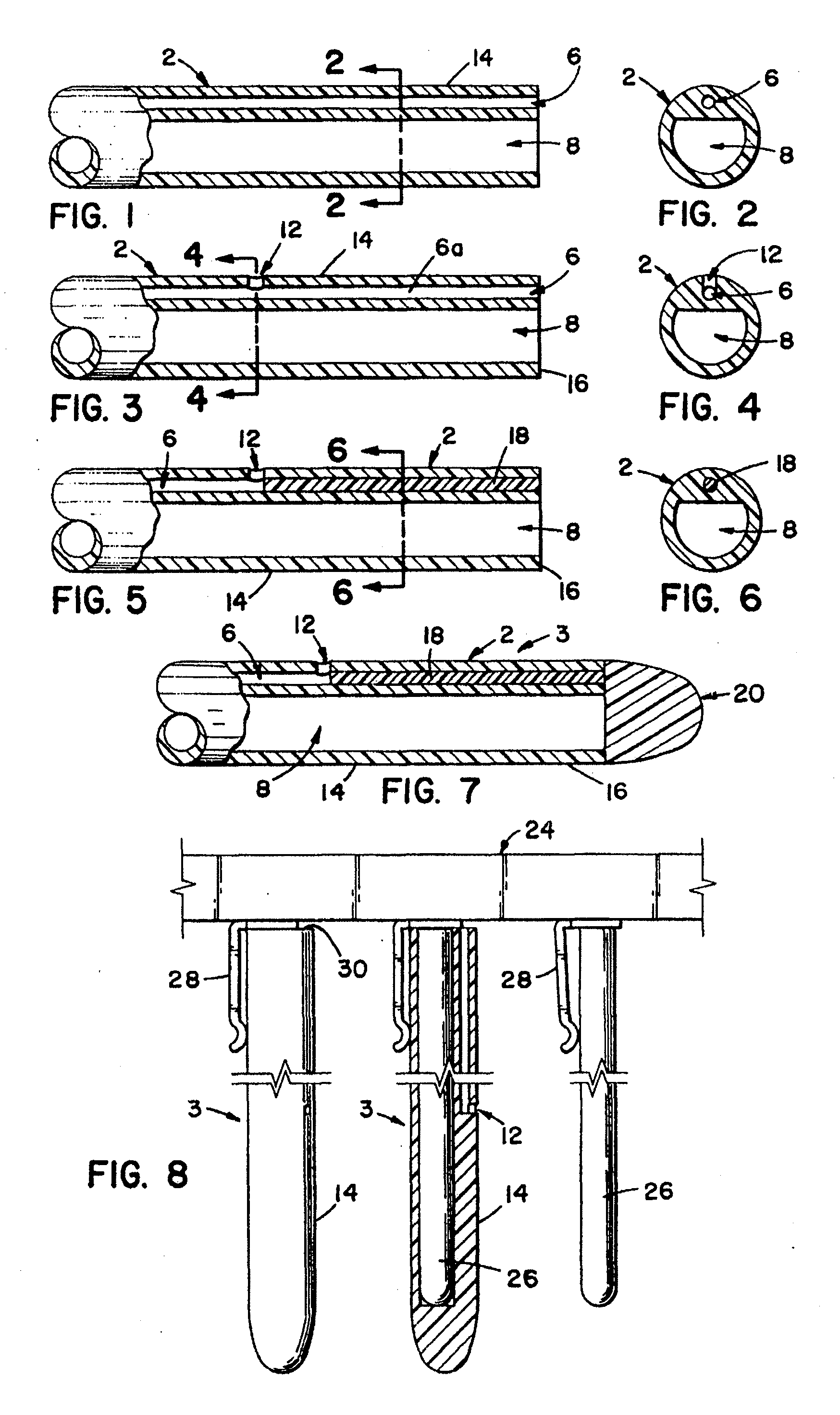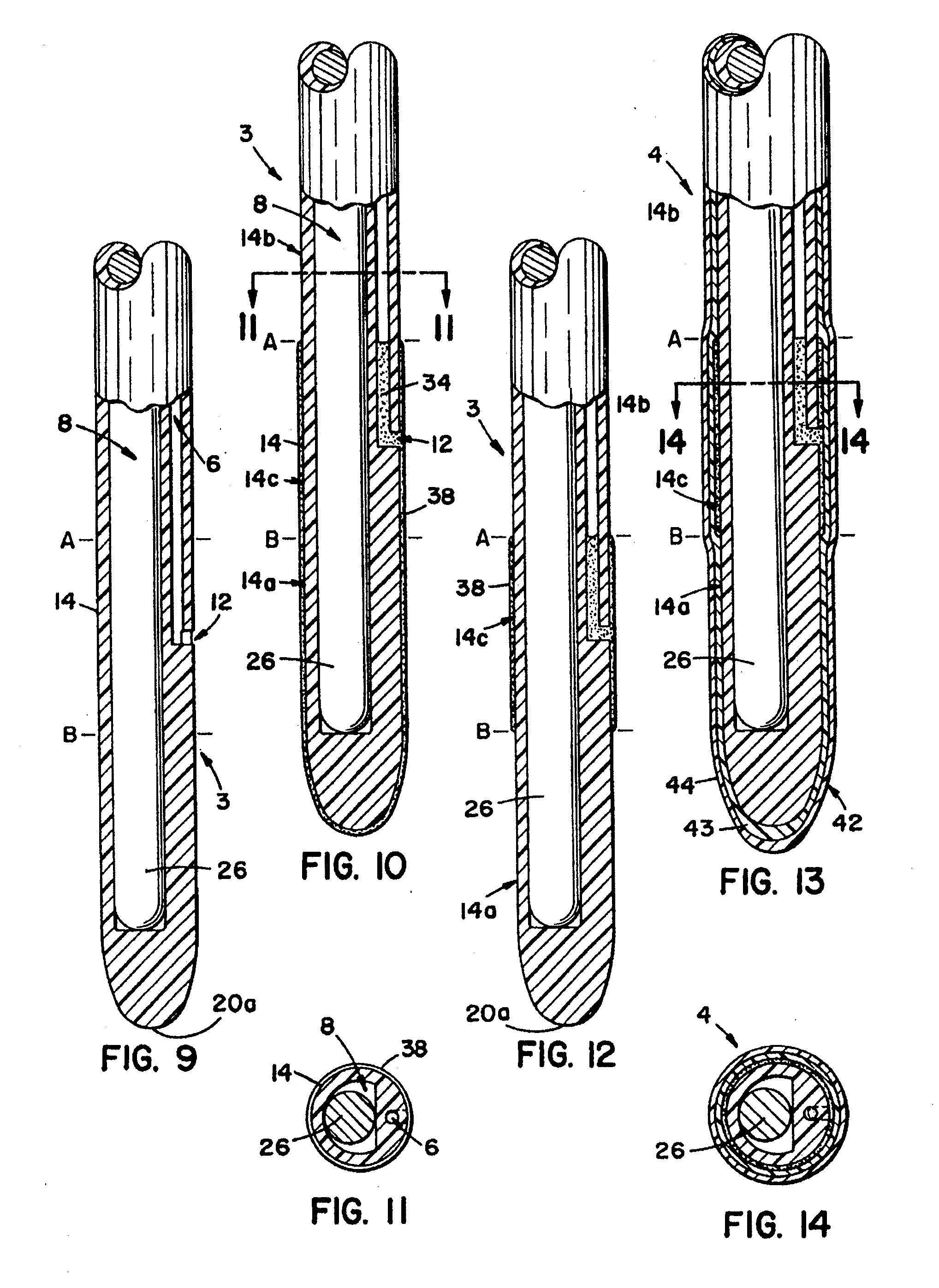Antifungal catheter
a technology of antifungal catheters and cannulas, which is applied in the direction of catheters, wound drains, coatings, etc., can solve the problems that inflamed or irritated tissues are less apt to respond effectively to suppress local microbial infections, urinary tract infections, urinary tract infections, etc., to reduce or eliminate the incidence of urinary tract infections, prevent proliferation, and increase the diffusion rate of antimicrobial agents from the polymeric matrix
- Summary
- Abstract
- Description
- Claims
- Application Information
AI Technical Summary
Benefits of technology
Problems solved by technology
Method used
Image
Examples
example i
[0158](A) The pallet 24′ is stopped over a first tank 33′, which contains white USP petrolatum heated to about 60° C. (about 140° F.). The tank is raised so as to immerse the intermediate tubes 3′ into the petrolatum to such a depth that the petrolatum reaches the proximal end of the desired sleeve location. The dip tank 33′ is then lowered and a portion of the outer surface 14′ of the intermediate tubes 3′ are coated with petrolatum. This portion extends from the general point at which the proximal end of the resilient sleeve 44′ will begin, to the distal end 20a′ of the tip 20′ of the intermediate tube 3′. This step is repeated when it is desirable to build up the thickness of the lubricating substance and the resulting volume of the sleeve cavity so as to increase the resulting increase in the outside diameter of the particular catheter over the circumferential diameter of the conduit portion or tube 2 or 2′ of this present invention.
[0159](B) The pallet 24′ is then automatically...
PUM
| Property | Measurement | Unit |
|---|---|---|
| Temperature | aaaaa | aaaaa |
| Temperature | aaaaa | aaaaa |
| Temperature | aaaaa | aaaaa |
Abstract
Description
Claims
Application Information
 Login to View More
Login to View More - R&D
- Intellectual Property
- Life Sciences
- Materials
- Tech Scout
- Unparalleled Data Quality
- Higher Quality Content
- 60% Fewer Hallucinations
Browse by: Latest US Patents, China's latest patents, Technical Efficacy Thesaurus, Application Domain, Technology Topic, Popular Technical Reports.
© 2025 PatSnap. All rights reserved.Legal|Privacy policy|Modern Slavery Act Transparency Statement|Sitemap|About US| Contact US: help@patsnap.com



